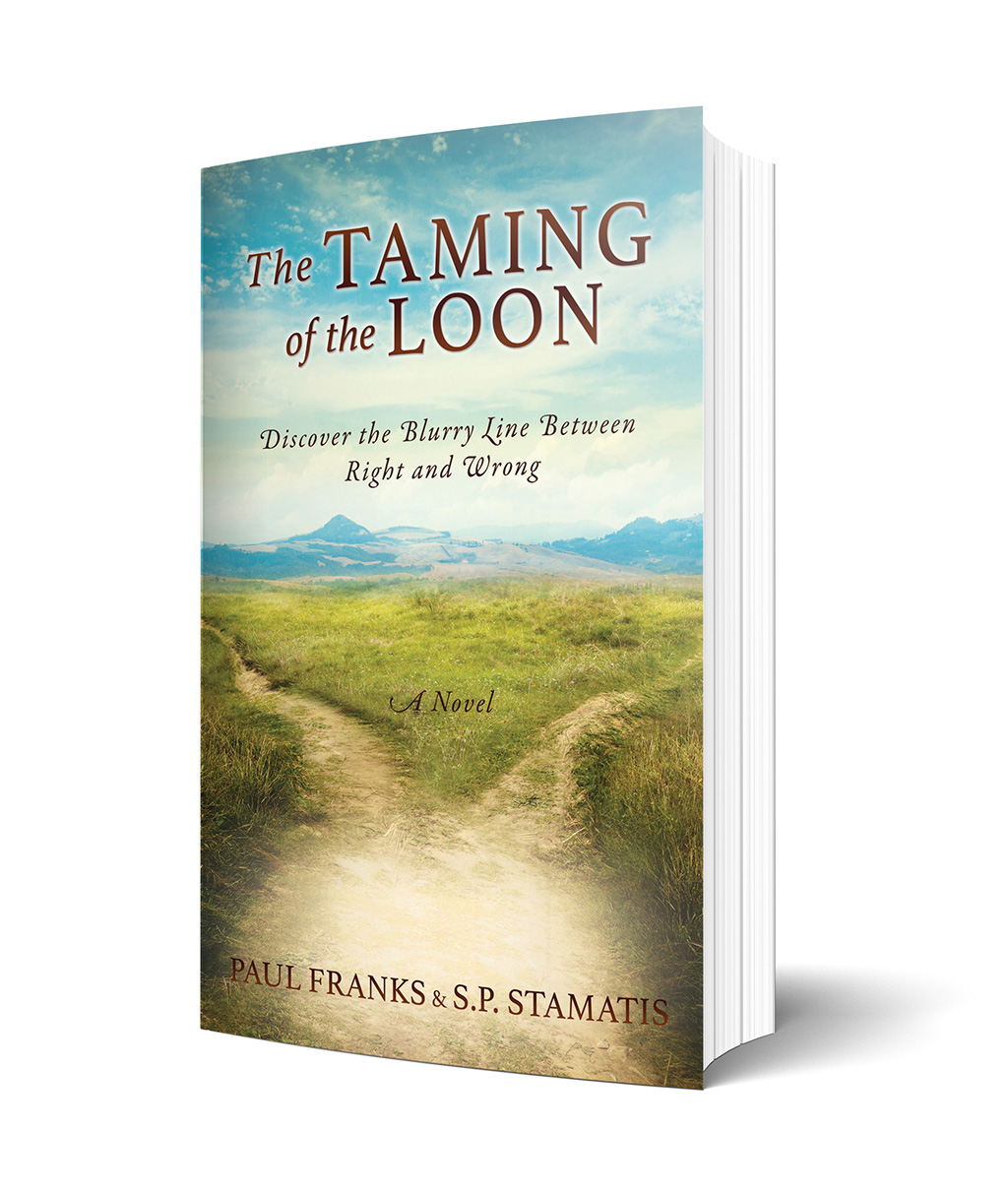Stan Rybak’s ministry has enjoyed wide acceptance at his new position at the cathedral. Now, in his early forties, he understands that the more we grow spiritually the more we realize that “Evil” is rooted in our imperfections and is not an external force bent on degrading and corrupting our innate goodness. Rather, the Prince of Darkness grows out of our inborn flaws when nourished by negative growth and moral drought.
Stan thinks EVIL is given too much sovereignty. A Buddhist would say evil acts are a byproduct of our own unharnessed appetites fed by spiritual deficiency. Characters in The Taming of the Loon represent developing individuals residing in various rungs of the spiritual ladder. Therefore, most corruption and violence occur because our flaws are cultivated more than our virtues and acquire dominance.
* * *
Consider the Parable of the Two Wolves. The story takes place long ago when this land belonged to Native Americans. In a small settlement among the Cherokee people, an elder and his grandson were talking. The grandfather revealed there are two wolves fighting within him all the time.
“They are fighting inside me,” he says. “One wolf is full
of anger, envy, regret, greed, deception, resentment, lies,
unharnessed ego, all destructive human qualities.”
The grandfather looks at the youngster who is riveted to the tale.
“The other one is armed with joy, peace, love,
humility, kindness, generosity and compassion.
Both creatures fight to the death with enormous
power. Son, the same battle is raging inside everyone
-and taking shape inside you, too!”
There’s silence for a few minutes as the grandson reflects on the story. Finally, he rushes toward his grandfather:
“Which wolf wins, grandpa?” he asks impatiently.
“The one you feed,” is his quick reply.
* * *
Regarding tensions in the Middle-East, Stan feels if militant Muslims truly believe that God is the ultimate arbiter, then leave justice to God and try to live in peace. If, on the other hand, they seek their brand of justice through violence, then leave God out of it. Hence, the real source of conflict and violence in the world may not be Evil itself, but rather consequences brought about by the interaction of people from different spiritual levels.
* * *
The march of humanity’s coming of age shall continue, the battles, wars and sieges, rise and fall of empires, the bloodshed—until people expel irrational and unjustifiable passions, recognize their flaws and degrade them. Stan believes it is up to each of us to behold the Big Picture and realize we are the designers and engineers of most life’s outcomes, not some obscure evil force we wish to blame.
* * *
Clearly, these internal conflicts determine our behavior with others and the ultimate moral decisions we make. In most situations, both forces are equally determined which may explain inaction and indecision on the part of many. Stan believes it is these uncommitted believers who are vulnerable and fair game. They are drawn to follow an emerging social god-head firmly rooted in this world, a New Normal that promises nothing beyond the grave.
